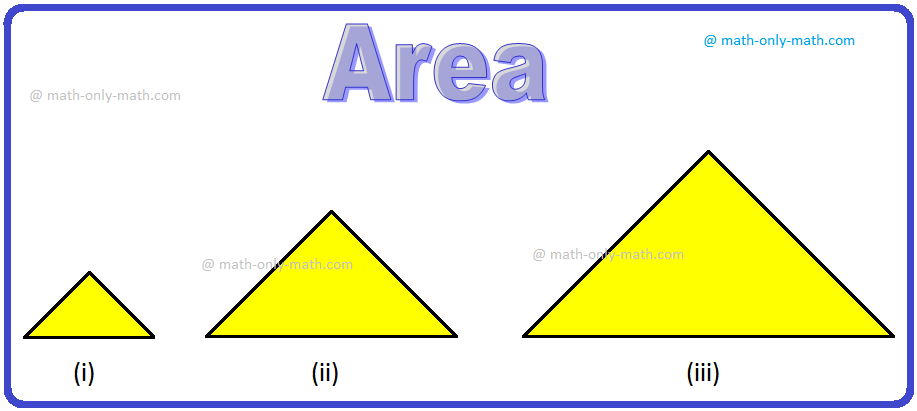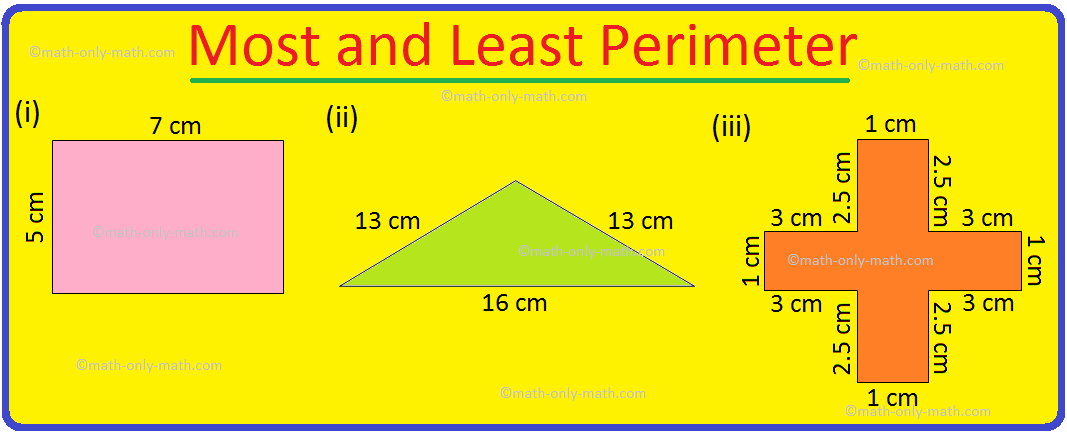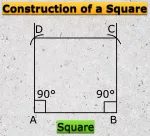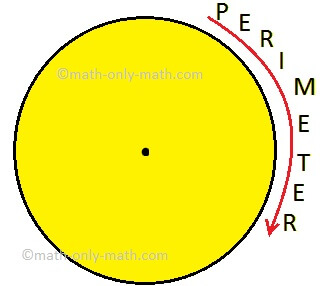Subscribe to our ▶️YouTube channel🔴 for the latest videos, updates, and tips.
Home | About Us | Contact Us | Privacy | Math Blog
Formation of the Quadratic Equation whose Roots are Given
We will learn the formation of the quadratic equation whose roots are given.
To form a quadratic equation, let α and β be the two roots.
Let us assume that the required equation be ax2 + bx + c = 0 (a ≠ 0).
According to the problem, roots of this equation are α and β.
Therefore,
α + β = - ba and αβ = ca.
Now, ax2 + bx + c = 0
⇒ x2 + bax + ca = 0 (Since, a ≠ 0)
⇒ x2 - (α + β)x + αβ = 0, [Since, α + β = -ba
and αβ = ca]
⇒ x2 - (sum of the roots)x + product of the roots = 0
⇒ x2 - Sx + P = 0, where S = sum of the roots and P = product of the roots ............... (i)
Formula (i) is used for the formation of a quadratic equation when its roots are given.
For example suppose we are to form the quadratic equation whose roots are 5 and (-2). By formula (i) we get the required equation as
x2 - [5 + (-2)]x + 5 ∙ (-2) = 0
⇒ x2 - [3]x + (-10) = 0
⇒ x2 - 3x - 10 = 0
Solved examples to form the quadratic equation whose roots are given:
1. Form an equation whose roots are 2, and - 12.
Solution:
The given roots are 2 and -12.
Therefore, sum of the roots, S = 2 + (-12) = 32
And tghe product of the given roots, P = 2 ∙ -12 = - 1.
Therefore, the required equation is x2 – Sx + p
i.e., x2 - (sum of the roots)x + product of the roots = 0
i.e., x2 - 32x – 1 = 0
i.e, 2x2 - 3x - 2 = 0
2. Find the quadratic equation with rational coefficients which has 13+2√2 as a root.
Solution:
According to the problem, coefficients of the required quadratic equation are rational and its one root is 13+2√2 = 13+2√2 ∙ 3−2√23−2√2 = 3−2√29−8 = 3 - 2√2.
We know in a quadratic with rational coefficients irrational roots occur in conjugate pairs).
Since equation has rational coefficients, the other root is 3 + 2√2.
Now, the sum of the roots of the given equation S = (3 - 2√2) + (3 + 2√2) = 6
Product of the roots, P = (3 - 2√2)(3 + 2√2) = 32 - (2√2)2 = 9 - 8 = 1
Hence, the required equation is x2 - Sx + P = 0 i.e., x2 - 6x + 1 = 0.
2. Find the quadratic equation with real coefficients which has -2 + i as a root (i = √-1).
Solution:
According to the problem, coefficients of the required quadratic equation are real and its one root is -2 + i.
We know in a quadratic with real coefficients imaginary roots occur in conjugate pairs).
Since equation has rational coefficients, the other root is -2 - i
Now, the sum of the roots of the given equation S = (-2 + i) + (-2 - i) = -4
Product of the roots, P = (-2 + i)(-2 - i) = (-2)2 - i2 = 4 - (-1) = 4 + 1 = 5
Hence, the required equation is x2 - Sx + P = 0 i.e., x2 - 4x + 5 = 0.
11 and 12 Grade Math
From Formation of the Quadratic Equation whose Roots are Given to HOME PAGE
Didn't find what you were looking for? Or want to know more information about Math Only Math. Use this Google Search to find what you need.
Recent Articles
-
What is Area in Maths? | Units to find Area | Conversion Table of Area
Jul 17, 25 01:06 AM
The amount of surface that a plane figure covers is called its area. It’s unit is square centimeters or square meters etc. A rectangle, a square, a triangle and a circle are all examples of closed pla… -
Worksheet on Perimeter | Perimeter of Squares and Rectangle | Answers
Jul 17, 25 12:40 AM
Practice the questions given in the worksheet on perimeter. The questions are based on finding the perimeter of the triangle, perimeter of the square, perimeter of rectangle and word problems. I. Find… -
Formation of Square and Rectangle | Construction of Square & Rectangle
Jul 16, 25 11:46 PM
In formation of square and rectangle we will learn how to construct square and rectangle. Construction of a Square: We follow the method given below. Step I: We draw a line segment AB of the required… -
Perimeter of a Figure | Perimeter of a Simple Closed Figure | Examples
Jul 16, 25 02:33 AM
Perimeter of a figure is explained here. Perimeter is the total length of the boundary of a closed figure. The perimeter of a simple closed figure is the sum of the measures of line-segments which hav… -
Formation of Numbers | Smallest and Greatest Number| Number Formation
Jul 15, 25 11:46 AM
In formation of numbers we will learn the numbers having different numbers of digits. We know that: (i) Greatest number of one digit = 9,





New! Comments
Have your say about what you just read! Leave me a comment in the box below. Ask a Question or Answer a Question.